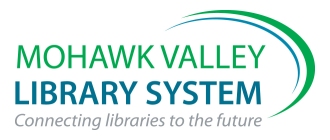 |
START WITH SCIENCE KITS
Science Programs for Children Ages 4 and 5 |
Objectives
- To provide children with the opportunity to witness chemical reactions with common kitchen foods.
- To allow children the opportunity to mix ingredients and make playdough to take home with them.
|
Books : (In kit)
- Too Many Babas by Carolyn Croll
|
Equipment : (In kit)
- 18 Bowls with lids (assorted sizes/Rubbermaid)
- 20 Aprons (plastic child sized)
- 12 Eyedroppers
- 1 Measuring cup (½ cup size)
- 2 Plastic jars
- 1 Spoon
|
Consumables : (To be supplied by you)
- Baking Soda (3 Tablespoons)
- Cornstarch (1 cup)
- Flavored gelatin (1 package per program)
- Flour (1 cup each; 5 pounds for 16 children)
- Food coloring (assorted)
- Forks (2 plastic)
- Oil (3 Tablespoons)
- Salt (½ cup each; 5 pounds for 16 children)
- Sugar (1 Tablespoon)
- Vinegar (3 Tablespoons)
- Yeast (1 package or 1 Tablespoon)
|
Resource Book : (Contact your local library to borrow)
- Carson, Mary Stetten. The Scientific Kid. Perennial Library, 1989.
|
Bookmarks : (In kit)
- Paper copies of the bookmark are included in the kit. PDF and JPEG copies are available here.
- PDF – 4 bookmarks per page. Ready to print in color.
- JPG – single high quality jpeg image.
|
Program
- Objectives
- To provide children with the opportunity to witness chemical reactions with common kitchen foods.
- To allow children the opportunity to mix ingredients and make playdough to take home with them.
- Introduction
- Ask – What is SCIENCE? (The study of the world around us)
- What is CHEMISTRY? (Study of chemicals and what happens when MIXED together.)
- Do we have any chemistry at home? In the kitchen?
- What are some of the things we mix? SOLIDS, LIQUIDS
- What do we know about SALT?
- Program
- Read TOO MANY BABAS, by Carolyn Croll.
- Comment on idea that “this time, we need a plan”. Following some plan of organization (in a group, at a table, etc.) prepare children to observe your “experiments”
- Put baking soda in a cup and slowly add vinegar to “make a volcano”.
- Pour water in a jar, add a few drops of food coloring, watch how it mixes to make colored water. Pour in some oil. Does this mix? Shake hard. Does it mix?
- Pour yeast granules in a clear jar. Let children see/hear/smell/feel the granules. These are actually little plants. What do we need to make them grow? Water – add some warm water. What happens? Feed them? – add a bit of sugar. Now stir. What happens? Put aside and come back later to observe.
- Flavored gelatin (plain works fine, but flavored is more popular). Put some of the powder in a cup. Use the eye dropper to drop 4 or 5 drops of water in the powder. Watch how the gelatin absorbs it. Use a fork to scoop it out to eat – it is a gumdrop (gelatin, sugar, water). Repeat for everyone.
- Give each child a bowl. Put in 1 cup of flour. Add ½ cup of salt. Have them MIX it together. Did it dissolve or change? Add ½ cup water and a few drops of food coloring. Now MIX again. Did it dissolve or change? Knead the dough till mixed and the right consistency to mold and use – it is playdough. This amount fits nicely in a plastic sandwich bag (A zippered bag seals nicely to keep it from hardening).
- Put 1 cup of cornstarch in a bowl. Be sure to have them feel this and see if they connect it with powder. Gradually add about 4 Tbs. of water and mix. It will be stiff at first, then suddenly mix. It is really getting to the “supersaturated consistency”. (That is a fun phrase to have children say. It means that the cornstarch can’t hold any more liquid without it separating out.) It should look rather glossy. If the surface is poked hard and fast, the finger will not penetrate. If approached slowly, the finger can slide in and around with the substance dripping off, but the finger staying almost clean. (Good lesson — force doesn’t always work as well as a gentler approach.)
- General
- Bring one zippered sandwich bag for each child’s playdough.
- Aprons are provided and encouraged to keep clothes a bit cleaner. Please wipe with a damp sponge when finished and be sure they are dry before folding them.
- Encourage children to smell/feel/taste/touch and even listen to the different kitchen “chemicals” at each step of the way. They change as they interact with each other. (Yeast granules have little smell when dry, but when proofing [dissolving in water and sugar] they smell quite different).
- Measurements are approximate, varying some with humidity, heat, ingredients, etc. Amounts can easily be doubled or halved to fit your desires.
|
Evaluation
Please print this evaluation, complete it and return to MVLS in the SWS red envelope.
Topics | About the Kits | Lending Policy

